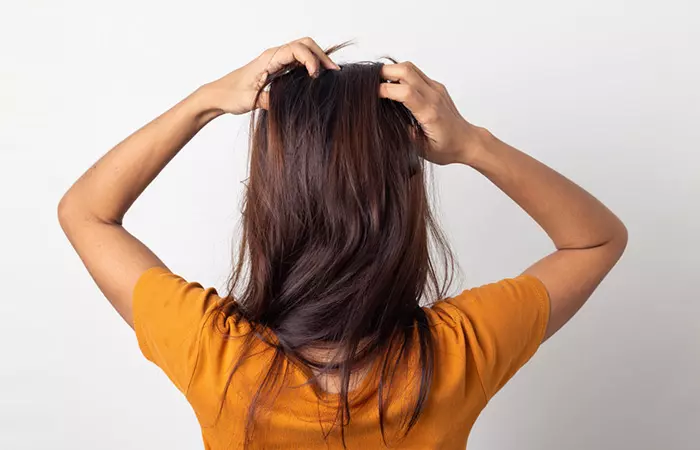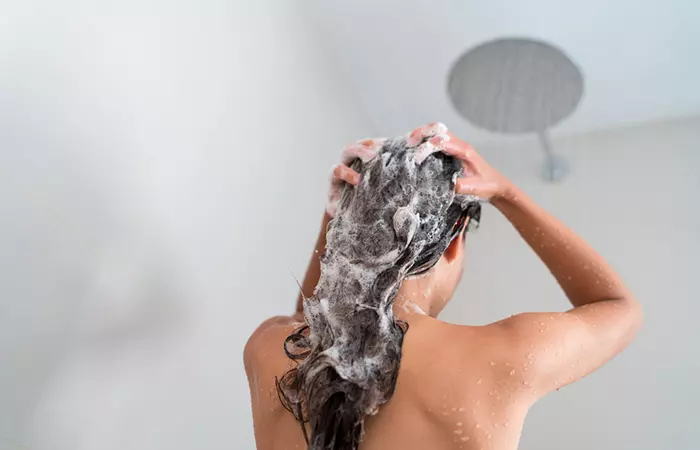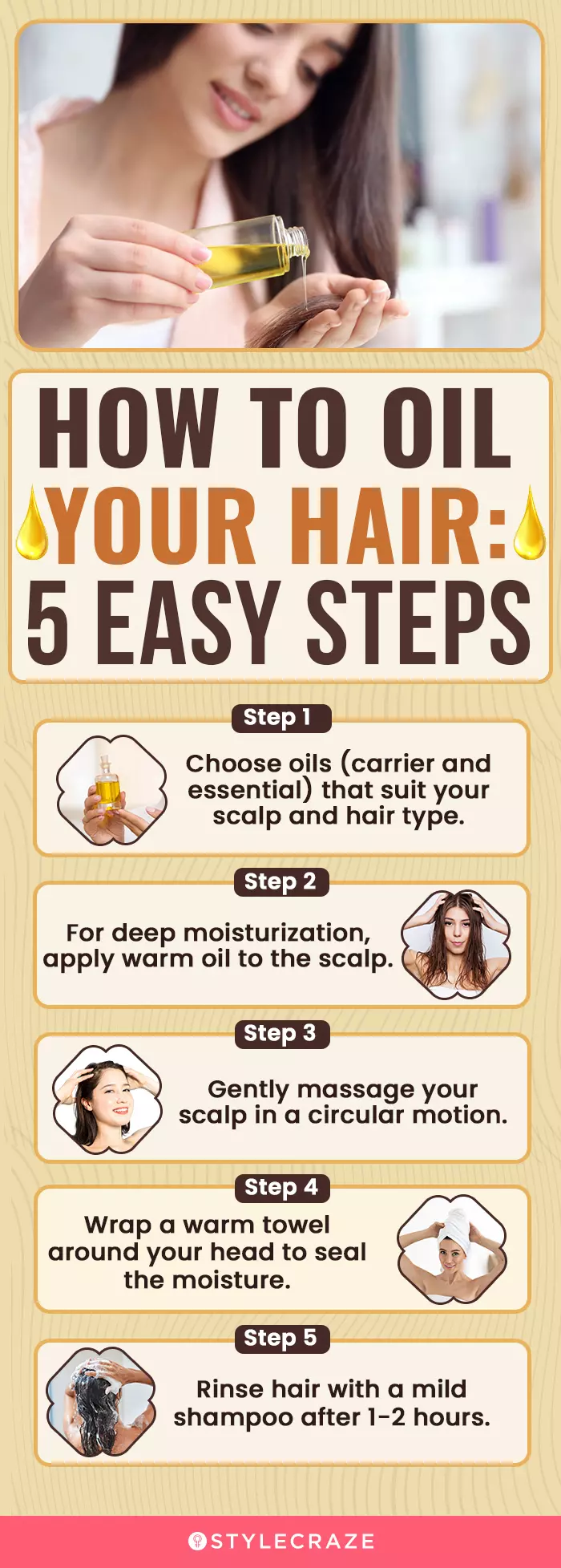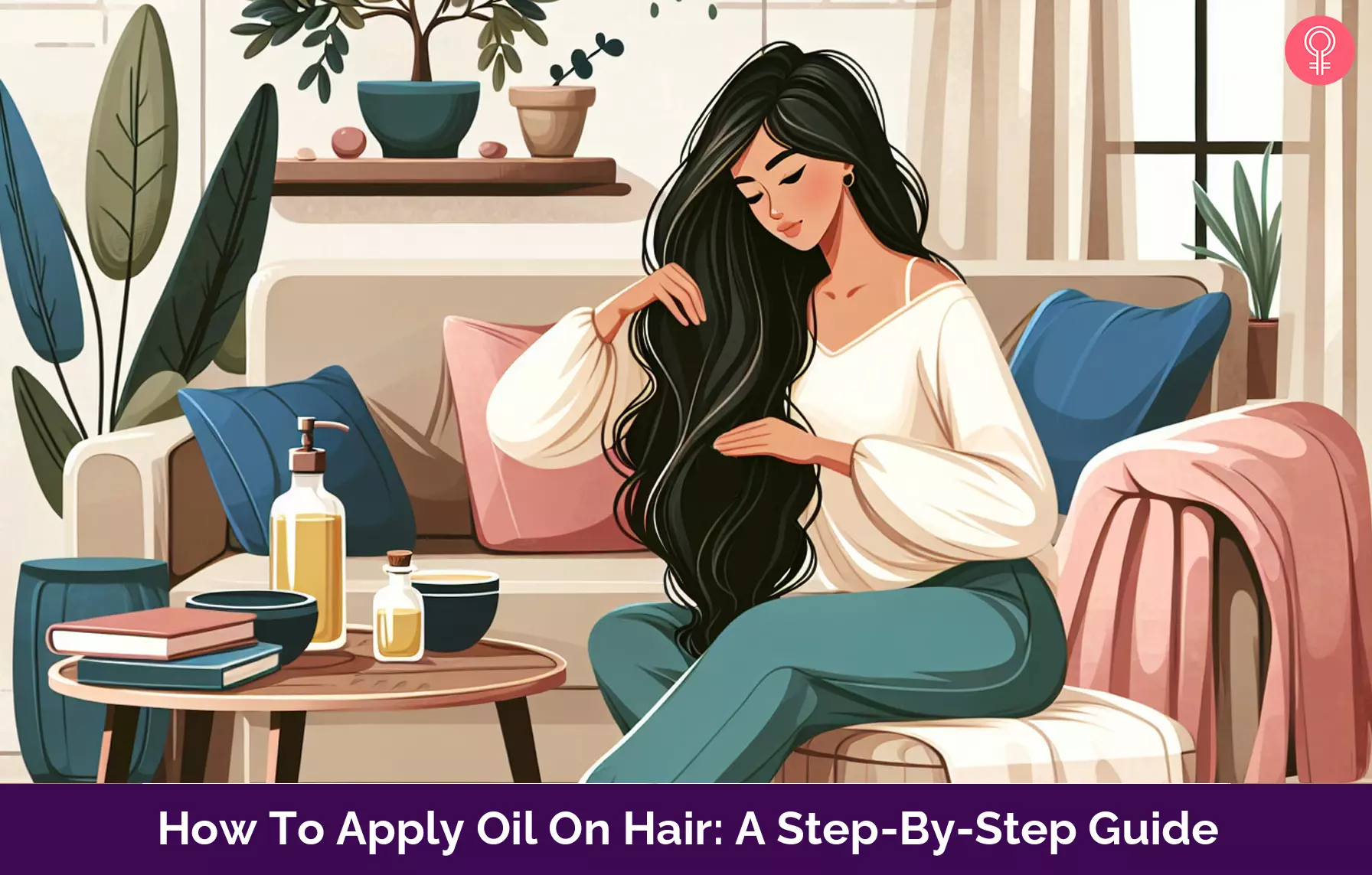How To Oil Your Hair Effectively: The 6 Steps
Step 1: Choose The Right Carrier Oil For Your Hair Type
Ensure that you are using the right carrier oil for your hair type. These oils can be used alone or with essential oils. Coconut, almond, jojoba, olive, sunflower, grapeseed, primrose, borage, and avocado oils are commonly used carrier oils. If you have a greasy scalp, use light oils like grapeseed and almond oils. Heavy oils, such as coconut, olive, and jojoba, are best for dry scalp and hair. If you have type 4 hair, it’s best to stick to oils for natural hair that ensures proper nourishment without any damage. Also, do not comb your hair after oiling. Dr. Michael May, Medical Director and Principle Surgeon at Wimpole Clinic, says, “The hair with oil is vulnerable to breakage since the scalp is relaxed.”
Step 2: Choose Your Favorite Essential Oil
Essential oils can help target specific scalp concerns like dry or flaky scalp. They promote hair growth and add shine and strength to your tresses. These are pure oils that capture the “essence” of the plant. You can choose them based on their properties and your hair type. You can pick from oils like tea tree, lavender, peppermint, rose, jasmine, lemon, and sandalwood essential oils. These are highly concentrated and must be diluted in carrier oils. For 2.5% dilution, use 15 drops of essential oil per 6 teaspoons of carrier oil. For 3% dilution, add 20 drops of essential oil to 6 teaspoons of carrier oil. It is best to start from the lowest ratio.
Step 3: Heat The Oil
No matter what your hair type is, you must heat the hair oil for a few seconds until it is warm. This allows for deeper penetration and seals the hair cuticles to keep the scalp moisturized. Ensure that the oil is not be not heated directly. Instead, warm it over hot water.
Step 4: Massage Your Scalp
Massaging the scalp stimulates the hair follicles and boosts blood circulation to the scalp (1). It also relieves headaches and promotes relaxation. Massage the oil onto your scalp gently for 10-15 minutes. Use your fingertips to massage in circular motions and gently rub the oil and cover the entire scalp area. After you are done with the scalp, apply it up to the ends of your hair.
Step 5: Wrap Your Hair With A Warm Towel
Wrapping your hair in a warm towel promotes deeper penetration of the oils into your scalp and hair. It helps rejuvenate dry and damaged hair and also seals moisture in your hair.
Step 6: Rinse It Off Well
Let your hair soak the oil for 1-2 hours. Wash it off with a mild shampoo. Do not leave it on for a long time as your hair will start attracting dirt. Use regular or cold water to rinse your hair. After washing off the oil, continue with your regular hair styling routine. The nourishing properties of the hair oil will leave your hair soft, smooth, and manageable, making it easier to style. Kreyola, a blogger, shared that she uses a heated blend of castor oil, olive oil and an essential oil on her sisterlocks or locs for nourishment. She writes, “I like how soft the castor oil makes my locks. I also massage my scalp with my hand that was already oily for extra circulation. That is totally optional (i)!” While applying oil, you may notice some hair fall. Is it something to worry about? Find out in the next section.
Why Do You Observe Hair Fall After Oiling?
Oiling and hair massages may cause the weak strands to fall off, and this is a common phenomenon. On average, you may lose 50-100 strands every day. As long as the hair fall rate is normal, there is no need to be concerned. After oiling, you should leave it on for a certain time to let the hair and scalp absorb it. Washing it off earlier may not serve the purpose.
How Long To Leave Oil On The Hair
Not all hair types require the same amount of time to absorb oil. Dr. May says, “Leaving oil on overnight means intensive treatment for your hair. However, this also means risking clogging your pores and accumulating dirt and grime on the hair and scalp if you leave the oil for too long.” So, as a rule of thumb, you should not leave it for more than 2-4 hours on your hair. You may wash it off on the same day. However, make sure to keep it on for at least 1-2 hours. Also, never apply oil to dirty hair.
What Happens When We Oil Dirty Hair?
When you apply oil to dirty hair and scalp, the oil further clogs the scalp pores, trapping the dirt. Dirty hair and scalp cannot soak the goodness of the oil, and your hair becomes prone to breakage. You can apply oil to both wet and dry hair. However, the results will be different.
Oiling Wet Hair Or Dry Hair – Which One Is The Best?
If you apply oil to wet hair, water will repel it and not allow the oil to penetrate through follicles. However, oiling wet hair allows better detangling and offers protection from heat styling tools. Applying oil on dry hair adds shine and protects the hair from UV rays and pollution. Moreover, dry hair can absorb oil effectively. However, you should be careful about the frequency and quantity of oil used.
Does Too Much Oil Damage The Hair?
The scalp produces natural oils to lubricate the hair and maintain hair health. Applying too much oil on the scalp disturbs this natural cycle and makes your hair greasy. Heavy oiling can clog the pores and choke the scalp, preventing hair growth and causing hair fall. Oiling your hair too often can make it greasy and limp. That is why the right frequency is key. Learn more in the next section.
How Often Should You Oil Your Hair?
How frequently you need to oil your hair depends on your scalp condition, hair type, and personal preference. It is generally recommended to oil one’s hair once a week for most hair types. However, those with really dry hair may benefit from oiling their hair twice a week. Find the right balance that works for your hair and adjust the frequency accordingly. Choose a suitable oil for your hair type and focus on the ends and dry areas to keep your tresses nourished and healthy. You can also make DIY hair oils that target specific hair issues. When should we apply oil to hair? Check out the infographic below to learn the essential steps to oil your hair properly.Illustration: StyleCraze Design Team You should apply oil to clean wet or dry hair. Oiling dirty hair can increase buildup and cause hair damage. Can I apply oil daily on my hair? Yes, you can oil your hair daily, especially if you have dry, damaged, or weak hair. Avoid regular oiling if you have acne-prone or oily skin and scalp. Do you oil before or after washing hair? You can apply oil before washing your hair and leave it on for an hour or overnight. How many times should I oil my hair in a week? Oil your hair once or twice a week if you have oily or normal hair. If you have dry hair, you can oil your hair more frequently.
Illustration: How To Apply Oil On Hair: A Step-By-Step Guide
Learn how to apply hot oil massage to prevent hair loss. Watch this video for detailed instructions.













